In the competitive landscape of the transportation industry, safety and performance are paramount. At CarMax Vehicle, we prioritize these aspects by integrating advanced Anti-lock Braking Systems (ABS) into our 4-wheel semi-trailers. This comprehensive guide delves into the intricacies of ABS in 4-wheel configurations, elucidating its significance, functionality, and the advantages it offers to modern semi-trailer operations.
What is ABS in 4-Wheel Semi-Trailers?
Defining Anti-lock Braking Systems (ABS)
Anti-lock Braking Systems (ABS) are safety mechanisms designed to prevent the wheels of a vehicle from locking up during braking. In the context of 4-wheel semi-trailers, ABS ensures that all four wheels maintain traction with the road surface, facilitating controlled and effective braking even under adverse conditions.

How ABS Works in 4-Wheel Systems
The ABS in 4-wheel semi-trailers operates through a network of sensors and electronic control units (ECUs). These sensors monitor the rotational speed of each wheel, detecting any signs of wheel lock-up. Upon detection, the ECU modulates the brake pressure to the affected wheel, allowing it to continue rotating and maintaining traction. This dynamic adjustment enhances stability and control during emergency braking scenarios.
The Importance of ABS in Semi-Trailers
Enhancing Safety on the Road
Safety is a critical concern for any vehicle on the road, especially for large semi-trailers. ABS significantly reduces the risk of accidents by preventing wheel lock-up, which can lead to skidding and loss of control. By maintaining wheel traction, ABS ensures that the driver retains steering capability, allowing for evasive maneuvers to avoid potential collisions.

Compliance with Regulatory Standards
Many regions mandate the use of ABS in commercial vehicles to enhance road safety. CarMax Trailer ensures that all our 4-wheel semi-trailers are equipped with ABS systems that comply with international safety standards, facilitating seamless operations across diverse regulatory environments.
Features of CarMax Trailer’s ABS Solutions
Advanced Sensor Technology
Our ABS systems are equipped with high-precision sensors that provide real-time data on wheel speed and brake performance. This granular monitoring allows for rapid adjustments, ensuring optimal braking efficiency under varying load and road conditions.
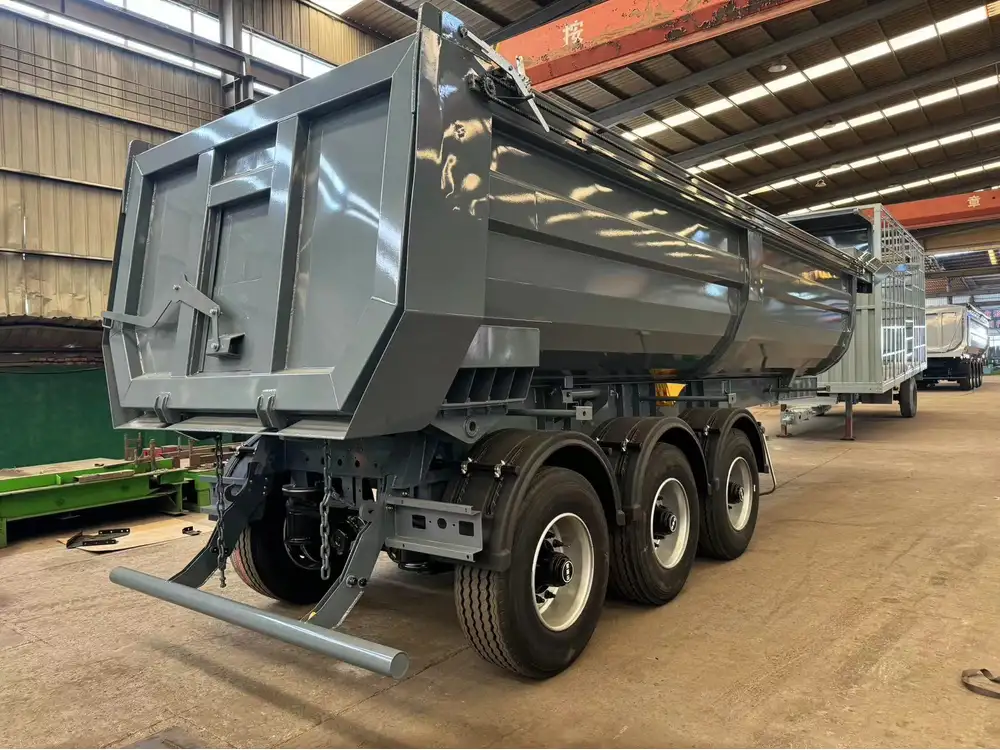
Robust Electronic Control Units (ECUs)
The ECUs in our ABS systems are engineered for reliability and speed. They process sensor inputs instantaneously, enabling swift brake modulation without delay. This responsiveness is crucial in maintaining vehicle stability during sudden braking events.
Integrated Diagnostic Capabilities
CarMax Trailer‘s ABS systems feature integrated diagnostics that continuously monitor system health. This proactive approach allows for the early detection of potential issues, minimizing downtime and maintenance costs.
Benefits of ABS in 4-Wheel Semi-Trailers

Improved Braking Performance
ABS ensures that all four wheels engage effectively during braking, distributing force evenly and maximizing stopping power. This results in shorter braking distances and enhanced overall performance, especially in emergency situations.
Enhanced Vehicle Stability
By preventing wheel lock-up, ABS maintains vehicle stability, reducing the likelihood of rollovers and jackknifing—common risks associated with large semi-trailers. This stability is particularly beneficial when navigating sharp turns or slippery roads.
Increased Driver Confidence
Drivers operating semi-trailers equipped with ABS experience greater confidence, knowing that their vehicle is equipped with advanced safety features. This assurance translates to more composed and efficient driving, contributing to overall fleet safety and productivity.
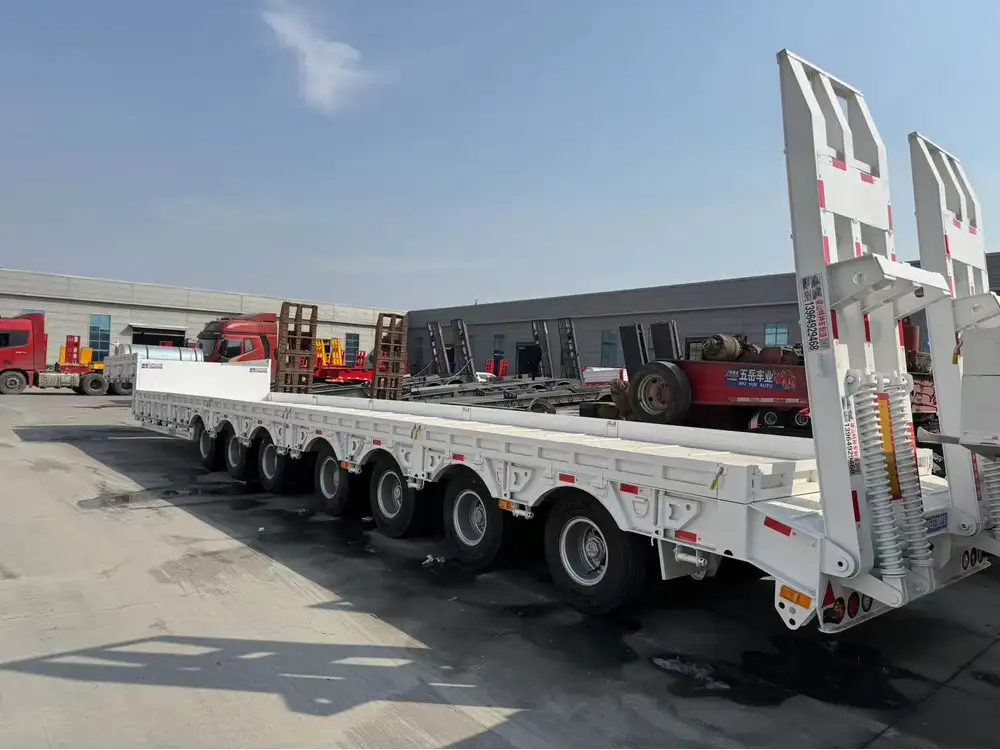
Installation and Maintenance of ABS Systems
Installation Process
Installing an ABS system in a 4-wheel semi-trailer involves several critical steps:
- Assessment and Planning: Evaluating the trailer’s design and braking requirements to determine the optimal ABS configuration.
- Sensor Integration: Mounting wheel speed sensors at each wheel hub to monitor rotational speed accurately.
- ECU Installation: Positioning the electronic control unit within the trailer’s frame for optimal performance and protection.
- Wiring and Connectivity: Establishing robust connections between sensors, ECU, and brake actuators to ensure seamless communication.
- System Calibration: Fine-tuning the ABS system to match the trailer’s specific dynamics and load characteristics.
Maintenance Tips
Regular maintenance is essential to ensure the longevity and reliability of ABS systems:
- Routine Inspections: Periodically check sensor connections, wiring integrity, and ECU functionality to identify and address potential issues.
- Brake System Maintenance: Maintain the brake components, including pads, rotors, and actuators, to ensure consistent performance.
- Software Updates: Keep the ABS software updated to incorporate the latest enhancements and address any identified vulnerabilities.
- Diagnostic Checks: Utilize built-in diagnostic tools to monitor system health and perform corrective actions as needed.
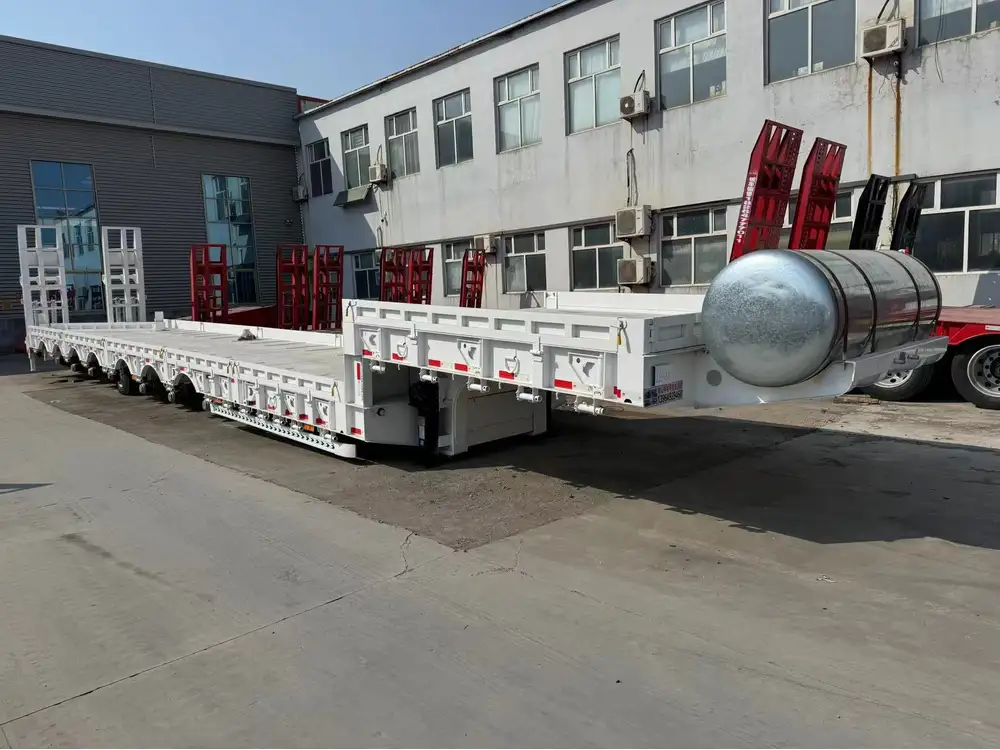
Comparing ABS with Non-ABS Systems
| Feature | ABS Systems | Non-ABS Systems |
|---|---|---|
| Braking Control | Dynamic modulation for all wheels | Uniform braking without individual control |
| Safety | Enhanced stability and reduced skid risk | Higher risk of skidding and loss of control |
| Braking Efficiency | Shorter stopping distances | Longer stopping distances |
| Driver Assistance | Maintains steering capability | Reduced steering control during braking |
| Maintenance | Requires regular sensor and ECU checks | Simpler, fewer electronic components |
| Regulatory Compliance | Often mandatory in commercial vehicles | May not meet safety regulations |
Technological Advancements in ABS for 4-Wheel Semi-Trailers
Integration with Electronic Stability Control (ESC)
Modern ABS systems are being integrated with Electronic Stability Control (ESC) to provide comprehensive vehicle dynamics management. This integration allows for simultaneous control of braking and engine power to optimize stability during complex maneuvers.

Enhanced Sensor Accuracy
Advancements in sensor technology have led to more accurate and reliable wheel speed detection, enabling finer control over brake modulation and improving overall ABS performance.
Predictive Maintenance Algorithms
Incorporating machine learning algorithms, ABS systems can predict potential failures by analyzing patterns in sensor data, facilitating proactive maintenance and reducing unexpected downtime.
How CarMax Trailer Supports ABS Integration
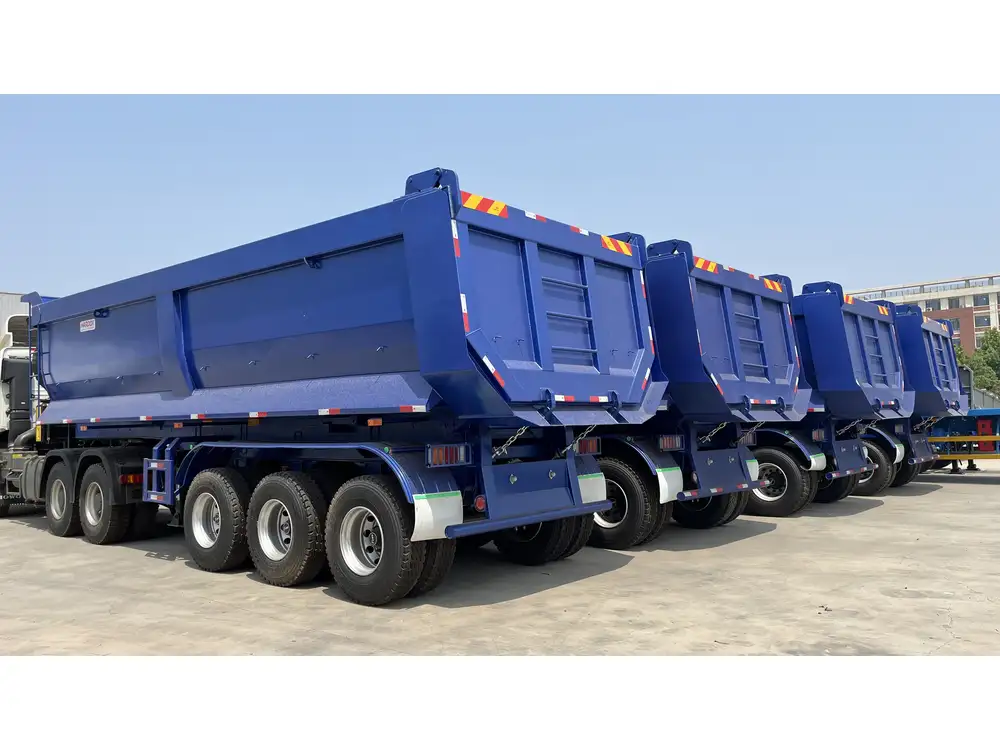
Customized ABS Solutions
At CarMax Vehicle, we understand that each semi-trailer has unique requirements. Our team works closely with clients to design and implement ABS systems tailored to specific operational needs, ensuring optimal performance and safety.
Comprehensive Customer Support
We provide end-to-end support, from initial consultation and installation to ongoing maintenance and troubleshooting. Our dedicated support team ensures that your ABS system operates flawlessly throughout its lifecycle.
Training and Resources
To empower our clients, we offer extensive training programs and resources on ABS system usage, maintenance best practices, and troubleshooting techniques, fostering a deeper understanding and effective management of the technology.

Best Practices for Using ABS in 4-Wheel Semi-Trailers
Adopting Proper Driving Techniques
- Maintain Safe Following Distances: Allow ample space between vehicles to provide sufficient braking distance.
- Gradual Braking: Apply brakes smoothly to complement the ABS’s modulation capabilities, enhancing overall braking efficiency.
- Anticipate Road Conditions: Stay informed about weather and road conditions to adjust driving behavior accordingly, leveraging ABS for maximum safety.
Regular Maintenance Routines
- Scheduled Inspections: Implement a routine inspection schedule to monitor ABS components and address wear and tear promptly.
- Brake System Care: Ensure that brake pads, rotors, and actuators are in good condition to support effective ABS functionality.
- Software Updates: Regularly update the ABS software to incorporate the latest enhancements and maintain system integrity.

Leveraging ABS Features
- Use ABS as Designed: Rely on the ABS system to manage braking in emergency situations rather than attempting to manually control brake pressure.
- Monitor ABS Indicators: Pay attention to ABS warning lights and indicators on the dashboard, addressing any alerts immediately to prevent system failures.
Future Trends in ABS Technology for Semi-Trailers
Integration with Autonomous Driving Systems
As the transportation industry moves towards automation, ABS systems will play a critical role in autonomous driving algorithms, ensuring precise and reliable braking control in self-driving semi-trailers.
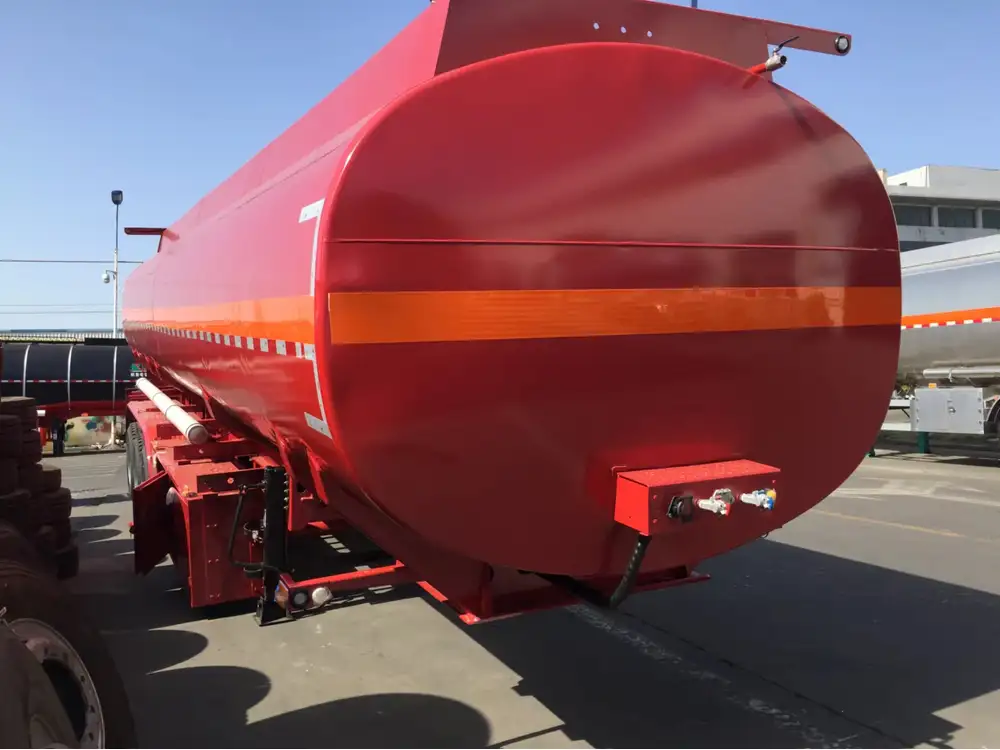
Enhanced Connectivity and IoT Integration
Future ABS systems are expected to integrate with Internet of Things (IoT) platforms, enabling real-time data sharing, remote monitoring, and advanced analytics for improved system performance and maintenance.
Sustainable and Energy-Efficient Designs
Innovations in materials and electronics are driving the development of more energy-efficient ABS systems, reducing the overall environmental footprint of semi-trailers without compromising safety or performance.
Conclusion
The integration of ABS in 4-wheel semi-trailers is a pivotal advancement in enhancing road safety and operational efficiency. At CarMax Vehicle, we are committed to delivering cutting-edge ABS solutions that not only comply with stringent safety standards but also exceed the performance expectations of our clients. By embracing advanced technology and adhering to best practices, we ensure that our semi-trailers provide unparalleled reliability and safety in every journey.

Frequently Asked Questions
1. How does ABS improve braking performance in semi-trailers?
ABS enhances braking performance by preventing wheel lock-up during sudden stops, maintaining traction, and ensuring more controlled and effective braking across all four wheels.
2. What maintenance is required for ABS systems in semi-trailers?
Regular inspections of sensors, wiring, and ECUs, along with brake system maintenance and software updates, are essential to ensure the ABS system operates efficiently and reliably.

3. Are ABS systems mandatory for all commercial semi-trailers?
In many regions, ABS systems are mandated for commercial vehicles to enhance road safety. Compliance with local regulations is essential, and CarMax Vehicle ensures our trailers meet these requirements.
4. Can ABS systems be retrofitted to existing semi-trailers?
Yes, ABS systems can be retrofitted to existing semi-trailers. However, it is recommended to consult with professionals to ensure proper installation and compatibility with the vehicle’s braking system.
5. What are the key benefits of choosing CarMax Trailer’s ABS-equipped semi-trailers?
Choosing CarMax Trailer‘s ABS-equipped semi-trailers offers enhanced safety, improved braking performance, compliance with regulatory standards, and access to our comprehensive support and maintenance services.



